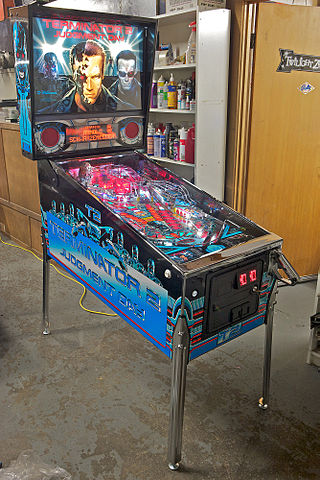
Pinball games are a family of games in which a ball is propelled into a specially designed table where it bounces off various obstacles, scoring points either en route or when it comes to rest. Historically the board was studded with nails called 'pins' and had hollows or pockets which scored points if the ball came to rest in them. Today, pinball is most commonly an arcade game in which the ball is fired into a specially designed cabinet known as a pinball machine, hitting various lights, bumpers, ramps, and other targets depending on its design.

Kirby's Pinball Land is a 1993 pinball video game developed by HAL Laboratory and published by Nintendo for the Game Boy. It was HAL Laboratory's third pinball video game after the MSX and NES title Rollerball and the Game Boy title Revenge of the 'Gator. It was also the first spin-off and second Game Boy title in the Kirby series, as well as the second pinball video game Nintendo published after the NES title Pinball. The game was rereleased on the Nintendo 3DS Virtual Console service in July 2012.
A glossary of terms, commonly used in discussing pinball machines.

The Magnificent Marble Machine is an American television game show. Contestants partnered with celebrities to answer trivia questions and gain control of an oversized pinball machine. The program premiered on NBC on July 7, 1975 at 12:00 pm ET, replacing the short-lived game show Blank Check.
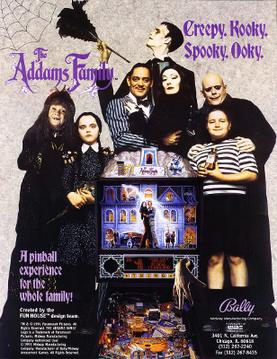
The Addams Family is a pinball machine released in March 1992. It was designed by Pat Lawlor and Larry DeMar and released by Midway. It was based on the 1991 film of the same name, and features custom speech by the stars of the film, Anjelica Huston and Raul Julia. It is the best-selling solid state pinball machine of all time with 20,270 units sold.
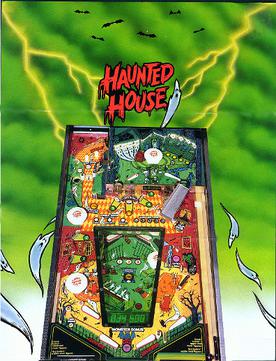
Haunted House is a pinball game released in October 31 1982 by Gottlieb. It was the first game with three playfields that the ball can move between, including one below the main playing surface. Haunted House was designed by John Osborne, with artwork by Terry Doerzaph. It is part of Gottlieb’s “System 80” series of pinball machines.

Star Trek: The Next Generation is a widebody pinball game, designed by Steve Ritchie and released in November 1993 by Williams Electronics. It was part of WMS' SuperPin series, and was based on the TV series. It is the only pinball machine that features three separate highscore-lists. Apart from the regular highscore-list and the buy-in-list, it also features a reminiscence to The Machine: Bride of Pin*Bot billionaires club. It is also the third pinball game overall based on the Star Trek franchise, following the 1979 pinball game by Bally, and the 1991 game by Data East, and preceding the 2013 pinball game by Stern.
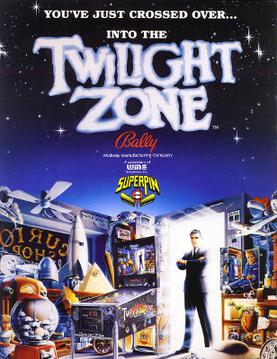
Twilight Zone is a widebody pinball machine, designed by Pat Lawlor and based on the TV series of the same name. It was first released in 1993 by Midway. This game is part of WMS' SuperPin line of widebody games alongside Star Trek: The Next Generation and Indiana Jones: The Pinball Adventure.

The Getaway: High Speed II is a 1992 pinball game by Steve Ritchie. It is a sequel to 1986's High Speed.
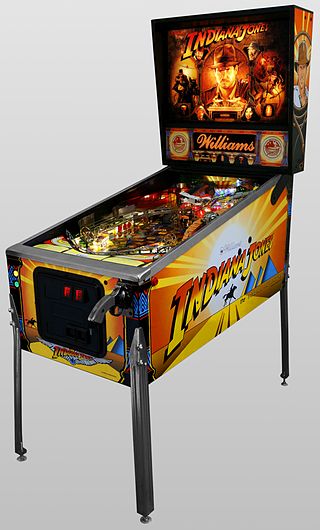
Indiana Jones: The Pinball Adventure is a 1993 widebody pinball game designed by Mark Ritchie and released by Williams. It was based on the Indiana Jones movies. It was also part of WMS' SuperPin series of widebody games.
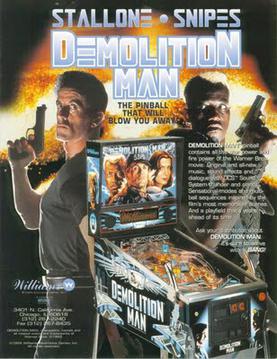
Demolition Man is a Williams pinball machine released in February 1994. It is based on the motion picture of the same name. It is part of WMS' SuperPin line of widebody games.

Creature from the Black Lagoon is a pinball machine designed by John Trudeau and released by Midway. It is loosely based on the movie of the same name. The game's theme is 1950s drive-in theater. The pinball game was licensed from Universal Studios by Bally so that all backglass and cabinet artwork and creature depictions would resemble those of the original movie.

Mary Shelley's Frankenstein is a 1995 pinball machine released by Sega Pinball. It is based in the film of the same name.

Jack-Bot is a 1995 pinball game which was designed by Barry Oursler and Larry DeMar, and released by US-based electronic gaming company Williams. It is the third game in the Pin-Bot series, following Pin-Bot (1986) and The Machine: Bride of Pin-Bot (1991).

Who Dunnit is a Midway pinball machine with a 1940s style and a murder mystery theme. The playfield features up to five different murder mysteries in which the player must find clues and evidence by making indicated shots. The machine accepts up to four players, and features four-ball play.
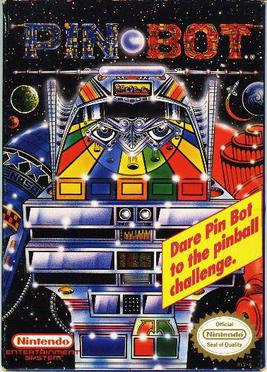
Pin Bot is a pinball video game developed by Rare and published by Nintendo for the Nintendo Entertainment System. It was released in North America in April 1990. It is a conversion of the pinball machine by the same name. The NES version of the game accurately reproduces some of the game-play and aesthetics of the pinball machine, while introducing new features and added challenges.
Police Force is a 1989 Williams pinball machine. The pinball machine was initially supposed to be released as Batman pinball, the police car was to be the Batmobile and the Jail was to be the Bat Cave. The machine features anthropomorphic jungle animals in the roles of police and robbers.

Comet is a pinball machine released by Williams in June 1985. It was designed by Barry Oursler, who was inspired by the Comet roller coaster at Riverview Park in Chicago, and was the first in an amusement park themed pinball trilogy followed by Cyclone in 1988 and Hurricane in 1991.

Genie is a widebody pinball machine designed by Ed Krynski and released in 1979 by Gottlieb. It features a jinn theme and was advertised with the slogans "Gottlieb's WIDE and Beautiful BODY" and "A Wide-Body Pinball absolutely bulging with player appeal and proven massive profit earning capacity!".
Bugs Bunny's Birthday Ball is a 1990 pinball game designed by John Trudeau and Python Anghelo and released by Midway. It is based on Warner Bros.' Looney Tunes and Merrie Melodies series of cartoons. This is the first of only three licensed pinball tables ever to feature the Looney Tunes characters.

















